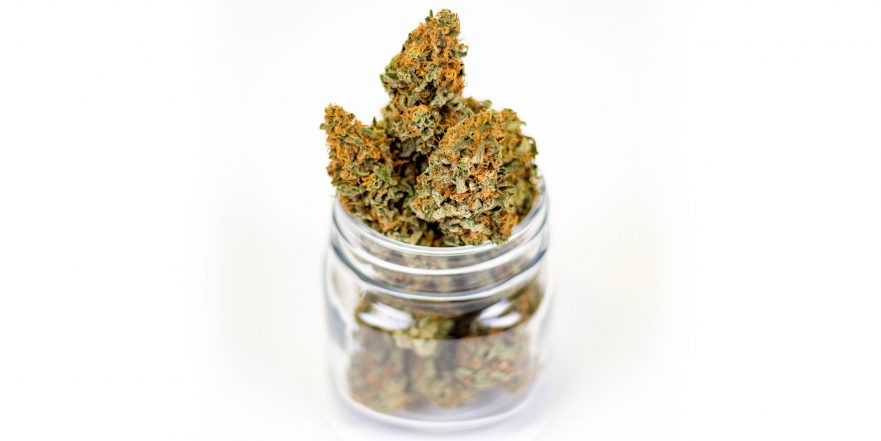You’ve likely noticed cannabis’ new presence in your hometown: marijuana leaves on billboards, CBD stores popping up, or a dispensary opening down the street. But, cannabis has been present in the United States since before its founding. Hemp, which is fast growing and easy to cultivate, was valued by early colonists for its versatility, and was even used as legal tender in select states in the 1600s. Although cannabis has had a long history in the United States, public opinion of cannabis has not always been positive, and the cannabis industry is still in the process of breaking down these barriers. Despite this, predictions for the future of the cannabis industry are optimistic.
The Cannabis Industry in the Past
Cannabis also has a long history of use and cultivation by U.S. presidents; George Washington wrote about growing hemp and using it to alleviate tooth pain, Thomas Jefferson cultivated hemp and likely smoked while ambassador to France, and it’s widely accepted that James Madison once remarked that “hemp gave him the insight to create a new democratic nation.”
By the late 1800s, cannabis products were commonly sold in pharmacies and cultivation remained widespread until its criminalization in the 20th century.
The public’s perception began to change when immigrants escaping the Mexican Revolution popularized recreational use. Cannabis developed a racial stigma and opinions deteriorated further during the social unrest of the Great Depression. By 1931, it had been prohibited in all 29 states.
Propaganda, like the film Reefer Madness, stoked fear with depictions of cannabis-induced murder and insanity. The film and other similar depictions were widely circulated in the 1940s, likely contributing to stricter sentencing in the 1950s.
The 1970s saw an intensified fear of cannabis during President Nixon’s presidency. Although federal commissions suggested decriminalization, Nixon ignored these findings and designated cannabis a Schedule I drug, with no medical value and a high potential for abuse.
The last few decades have seen presidents increase federal drug abuse spending from $5 billion to $12 billion, mandates for life sentences for repeat offenders, and raids and seizures of cannabis- even in states that had legalized. And while many hoped that President Obama would change federal policy, he primarily left decisions to the states.
The Cannabis Industry in the Present
Despite cannabis’ negative image and association with heavier drugs, 1996 saw California’s Compassionate Use Act which allowed medicinal marijuana for patients with severe illnesses. The public’s perception of the plant began to change, but it would be almost two decades before real progress was made.
Today, 36 states have legalized medical marijuana and 18 states have legalized recreational cannabis. Although California paved the way for medical use, Colorado and Washington were the first to legalize recreationally in 2012. Since it was signed into law, Colorado has earned over $1 billion in cannabis revenue, enticing more and more states to legalize. While it’s still illegal under federal law, it’s becoming likely that this will change – and change may be coming soon.
Polls show that a majority of Americans support cannabis, with 59% supporting full legalization and 32% favoring medicinal use only.
Cannabis Industry Predictions for the Future
Cannabis legalization has been expanding rapidly in the United States and states like New Jersey and New York are in the midst of rolling out the developing cannabis programs. Whether taking steps toward recreational cannabis legalization or establishing a medical marijuana program, most states are in the process of expanding legal cannabis access and predictions for the future of the cannabis industry are positive.
But, while states continue to legalize, an illicit cannabis market still remains active. Licensed cannabis businesses must remain vigilant in securing their locations and proactively protecting their employees, customers, and products. There continues to be an increasing demand by the states to better safeguard these legitimate businesses without looking like a prison with high fences and armed guards. Cannabis businesses, especially dispensaries, want to be seen as welcoming and inviting retailers, without sacrificing the quality of security.
While cannabis may not be available in every state yet, it’s likely that it will have a legal presence nationwide, whether medicinal or recreational, within the next few years — and the cannabis security industry will only expand.
How Can Sapphire Risk Help?
Tony Gallo and the team at Sapphire Risk Advisory Group have over 30 years of security experience and expertise. Follow us on social media to stay up to date with cannabis industry updates!
- 3D Dispensary Security Tour
- Natural Medicine Security Plan for Colorado Psilocybin Application

- New Jersey: Cannabis Consumption Area Application

- Cannabis in the US Virgin Islands

- Case Study: New Jersey Cannabis Retailer

- Delivery Vehicle Security

- Crime Prevention Through Environmental Design (CPTED)

- Schedule III: Cannabis Regulatory Disruptions Ahead

- Perfect Your Delaware Cannabis Business License Application With a Security Consultant

- Our Story: Sapphire Risk Advisory Group

